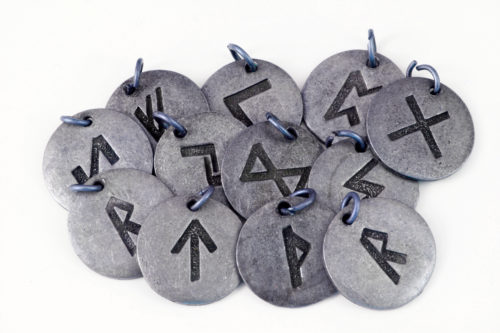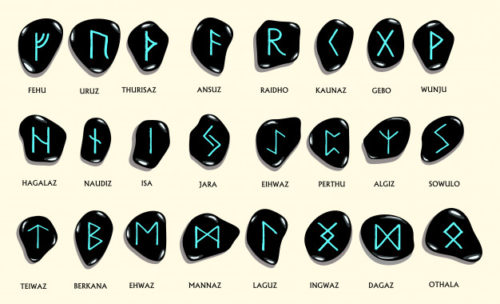The Rune Stones are an oracle, a means of prayer and guidance as found in almost any religion.
Runes are older than the Old Testament although their modern interpretations include links to Christ as well as other more modern Gods.
The Vikings used the Runes as a guide for the Spiritual Warrior, the knowledge and the coming to the Self.
The battle of the Spiritual Warrior is to know that the Self within and God are one.

This is the quest of each person during his or her human experience. Nothing is more important than your relationship to the Self within.
As with any oracle, the Runes do not predict the future. They see the current situation and give the Spiritual Warrior insight as to the action that should be taken in this situation.
The Runes see the current situation and what is likely to happen if no changes are made.
As with any suggestion and guidance from the God of your understanding, the choice is yours by free will.
If you don’t like what the Runes have to say, change your behaviour so that you change the outcome. Nothing is predestined.
The 24 original Nordic Runes are split up into three groups of eight – or ‘Aett’. They go under the God’s names Freyr, Hagal, and Tyr. These Ancient Norse Gods are still with us today.
For instance, Freyr – wife of Odin, is still remembered in ‘Friday’ and Tyr, God of battles – also known as Tiw, is recalled in ‘Tuesday’.
Because they are so ancient, the Rune symbols go deep into the roots of the human collective unconscious – beyond all cultural and national boundaries – this might explain how the Runes spread so easily throughout Europe and beyond.
For this reason, we should welcome them warmly, and connect ourselves to the ancestral roots of the human race.

Rune magic spells and talismans
There is nothing mystical about magic. Magic comes from an understanding of the subtle vibrations that emanate from all things.
Rune magic teaches how you can attune yourself to individual Runes. Today, many people take written language for granted and use Runes as an alphabet without really understanding the magical importance of doing so.
When you write a word with Runes, it empowers that word. The Norse would often finish inscriptions stating who wrote it, or who made it – this was a way of magically connecting the writer or carver of the Runes with what they had just written.
Another way of using the Runes for magic would be to write out the Runes into rows, or Rune scripts.
These are a kind of shorthand spell, made up of a sequence of two or more Runes.
For example, if you wanted to create a Rune row to help enhance your psychic abilities, you might incorporate: Laguz + Water – relating to the subconscious and mysteries; Perth + Dice-cup – for divination and magic; Ansuz + Odin – the God of the Runes; and Kenaz + Torch – for inspiration.
There are also Bindrunes. A Bindrune consists of two or more Runes that have been joined together in some way.
Occasionally, Runes like Fehu, Raiðo, or Wunjo would be joined at the base of their ‘stems’, forming a wheel. Other times, Runes would be joined side by side, or combined into a single Rune.
The most popular method today would be to combine them into a single Rune. However, historically, Bindrunes were used as ‘contractions’ in an inscription, either to save space or to reduce the number of Runes in the inscription to magically show signs that promised success.
Another way of empowering yourself is to wear a Rune around your neck. Runes emit powerful vibrations, and by wearing a Rune around your neck, you subject the whole of your being to that positive vibration.
This will have a protective effect, and will also attract the qualities of that Rune into your life.
Rune spells and talismans were traditionally cut or scratched into wood.
The process of creating a Rune spell is a ritual in itself. The technique traditionally involved the following steps:
- Carving or cutting the Runes into the wood, bone or stone
- Colouring or ‘reddening’ the Runes with either red ochre paint or the magician’s own blood – this would connect the spell magically to the person doing it.
- Sending the Rune spell to its destination, often by burning.
- Making an offering of thanks to the Gods – usually of mead or ale.
